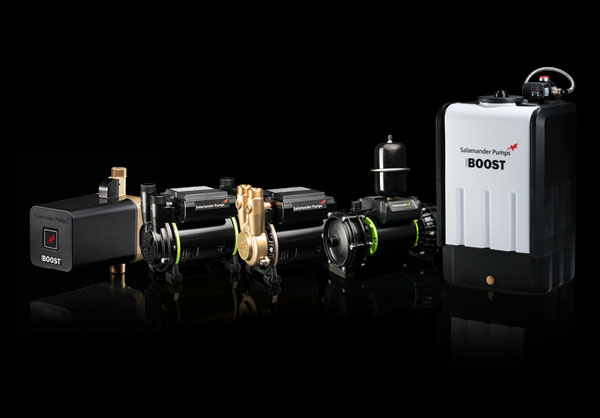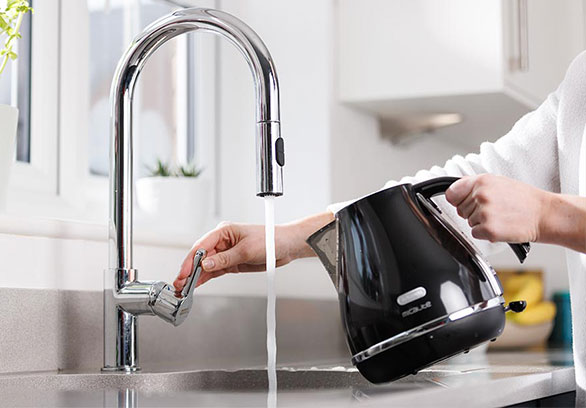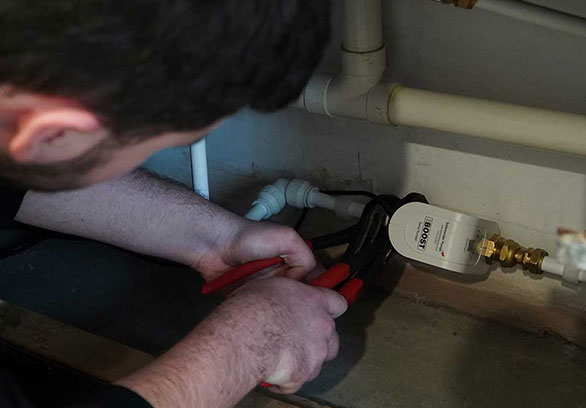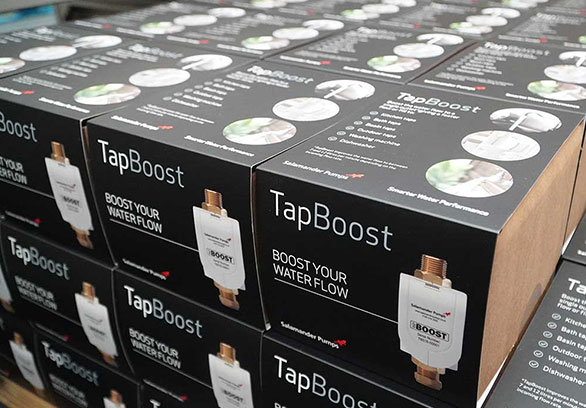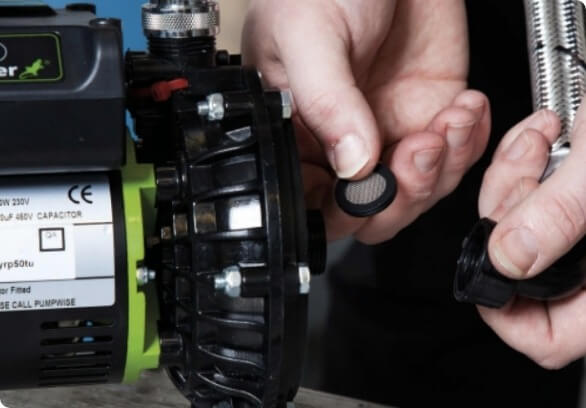Installation
Key Considerations When Selecting and Installing a Right Pump
Homes across the UK often deal with disruptions caused by poor water performance from outlets situated throughout the entire household. In busy homes where water demand is high, the most effective solution is a pump that meets with the requirements of whole-house applications.
As low water pressure and poor flow rates are ongoing issues for a multitude of reasons, the type of plumbing systems in place will determine the pump type and installation that can effectively alleviate these concerns, ensuring a superior water experience for homeowners.
What are the important considerations while selecting a Right Pump?
In a vented (gravity-fed) system a cold-water storage tank (cistern), usually located in a loft, and a hot water cylinder, often found in the airing cupboard, supply water across the property. The water pressure and flow rates are determined by the height between the cold-water tank and the outlet. Often a pump, such as a Right Pump, is needed to supply sufficient water pressure and flow to the outlets.
Salamander Pumps’ Right Pump range is a powerful, high-quality solution that is ideal for improving the water supply to the whole house in a gravity-fed system. Suitable for use with multiple outlets, including showers, baths, and basins.
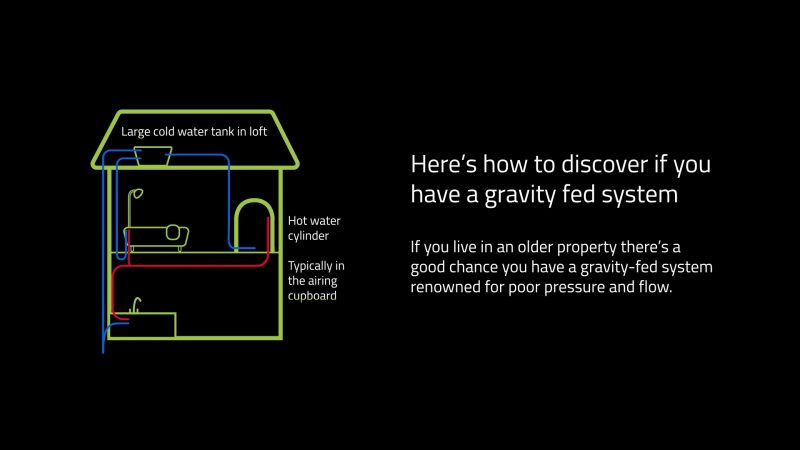
How to Identify a Gravity Fed System
1. Positive or universal (negative) range
A gravity fed system is either positive head or negative head, depending on the natural flow rate of the water in the home.
To activate a positive head Right Pump, 1 litre per 30 seconds (2 L/min) of water should be able to flow through each side of the pump naturally and out of the tap or shower. For showers, you also need to get 2 litres of mixed water (hot and cold together) in 30 seconds.
This will lift the flow switches and turn the pump on. Where this flow cannot be achieved, a negative head pump is required.
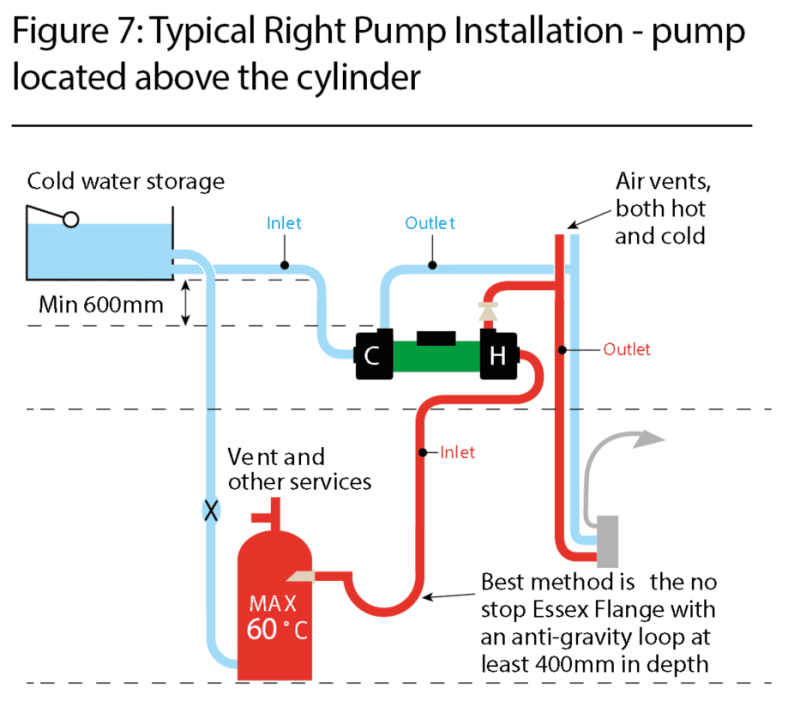
Negative head systems exist where the natural flow of water that goes to the outlet (tap, shower etc.) is less than 1 litres in 30 sec on either hot or cold and less than 2 litres in 30 sec on mixed shower. This can happen when the outlet, or the pipework to the outlet, is close to or above the height of the base of the cold water cistern.
Negative head systems occur in loft conversions or where the cold water cistern sits on the joists in the loft. If the distance between the bottom of the cold water cistern and the highest point of the system after the pump is 2 feet (610mm) or less, it is also possible that a universal pump will be required.
For universals pumps, ensure that the pressure vessel is fitted to the brass connection on the top of the pump with the ½ rubber washer and is half tight.
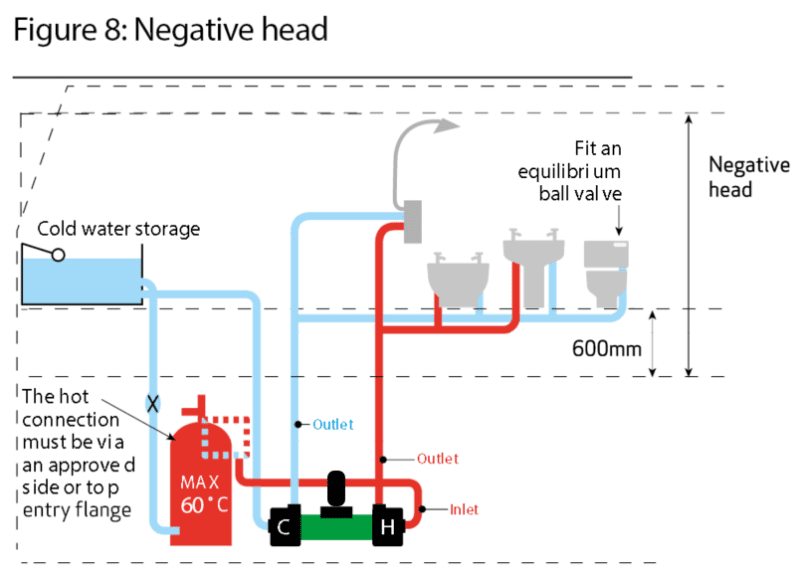
2. Twin or single
Twin pumps are designed to boost both hot and cold water. They’re ideal for dual shower setups, like mixer showers, or when you need to boost pressure in both hot and cold water.
Single pumps are designed to boost either the hot or cold water. For instance, in systems where there are outlets utilising mains cold water, but still have the hot water on a gravity fed system, a single universal pump will be required to equalise the pressure by boosting the hot water to match the mains cold water pressure.
3. SuperBooster pack
It is recommended to use SuperBooster packs in larger properties. Our SuperBooster packs include two single ended, universal (negative head) pumps from the Right Pump range. The pumps can be used to ‘split’ a pumped installation, with one pump used to boost the cold water pressure and the other to boost the hot water pressure offering higher pressures across hot and cold water compared to a twin pump.
Right Pump Installation
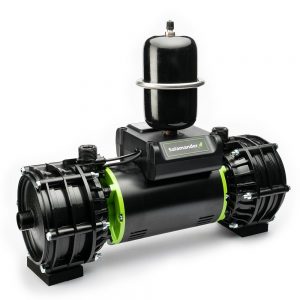 Involving an easy installation process, Right Pumps use the vacant space above the pump for the pressure vessel on universal models to limit the space used by the unit.
Involving an easy installation process, Right Pumps use the vacant space above the pump for the pressure vessel on universal models to limit the space used by the unit.
For optimal placement, the pump should be positioned at the cylinder’s base. The main considerations are to ensure airflow is adequate for motor cooling and to isolate the pump from heat-emitting appliances. This can be easily achieved by leaving a 100mm clear space on each side, both ends, and on top of the pump.
Crucially, the hot supply to a centrifugal pump must be via an anti-aeration flange to minimise air intake. Air bubbles gather at the top of the hot water cylinder, a flange draws water from deeper within the cylinder where the water is less aerated. Air in a pump can lead to cavitation and cause serious damage. Not only will the pump’s components lifetime dramatically decrease, but the operating noise will also increase.
Key tips to remember while installing a Right Pump
- Anti-vibration couplers must be kept as straight as possible, bent no more than 35°.
- Hot water temperature must not exceed 60ºC, and approved temperature control needs to be in place.
- The hot water supply to the pump must be using a Salamander Pumps approved method such as a No-Stop Essex Flange or S-flange.
- The hot supply pipework from the hot water cylinder to the pump should be a limited up to a maximum of 5m in 22mm pipe.
- Ensure sufficient cold water storage capacity (minimum 50 gallons/227 Litres per bathroom, 80 gallons/385 Litres for one bathroom and one en-suite shower room).
How to reduce water pump noise
The installation of a Right Pump can also help to keep noise to a minimum. Some of the key things to consider are outlined below:
- Ensure the pump is sat on a level surface.
- Install a pump mat to reduce the vibration that is passed from the pump through to surface it is sitting on.
- Fit the feet, Right Pumps are supplied with anti-vibration feed that further reduce vibration.
- Keep AV couplers straight. They are able to flex, but they must not be bent more than 35°.
- Clip the pipework from the pump to limit vibrations transferring from the pump to the pipework.
